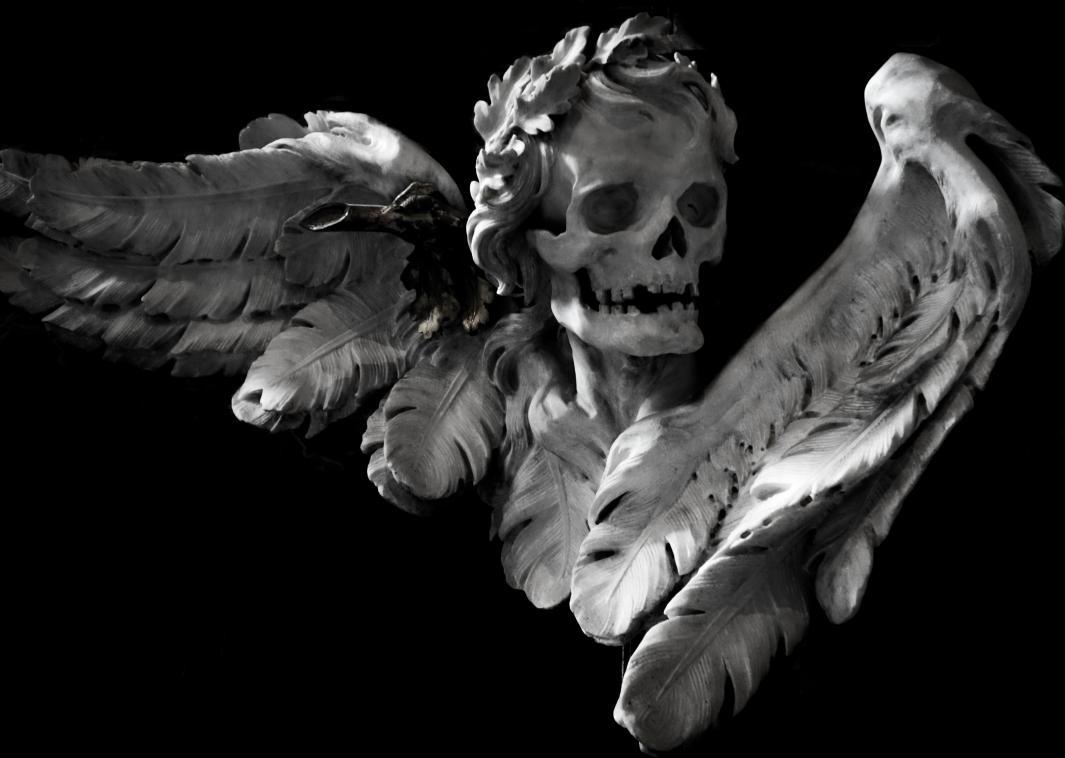Atlas Obscura on Slate is a blog about the world’s hidden wonders. Like us on Facebook, Tumblr, or follow us on Twitter @atlasobscura.
The Catholic churches in Rome are full of skeletons. While the bodies of the saints are often the most famous examples, the skeletons lurk around the tombs of the clergy and laity as well. Unlike the saints, the physical remains of former parishioners are largely kept out of sight, but if you imagine the number of bodies resting just beyond every surface, the churches start to look like mega-necropoli. You realize you’re walking though Tokyos made of tombs.
You don’t need an over-active imagination though; the Baroque skulls and life-sized marble skeletons decorating the graves are designed to grab your attention and speak to you. At Santa Maria dell’Orazione e Mort a skeleton delivers a message to the living on the street from the dead inside the crypt: “Hodie mihi. Cras tibi.” “Today me. Tomorrow you.” It shrugs. The skeletons are eager to remind you that the bones holding you up will be all that’s left some day.
Though their rhetoric is grim, the skeletons are surprisingly lively. At San Francesco d’Assisi a Ripa Grande, they climb out from behind the artwork. At Gesù e Maria, one appears frozen in the middle of a solo danse macabre, flailing so wildly it seems to be coming apart. It’s this kinetic quality that’s so arresting; life bursts supernaturally from these dark corners devoted to death. The juxtaposition is unsettling but it illustrates the Catholic belief in eternal life. Though the skeletons tell you that you too will die, they’re also showing you they believe there is another life to come.
Read more about Rome’s sculptural skeletons on Atlas Obscura.
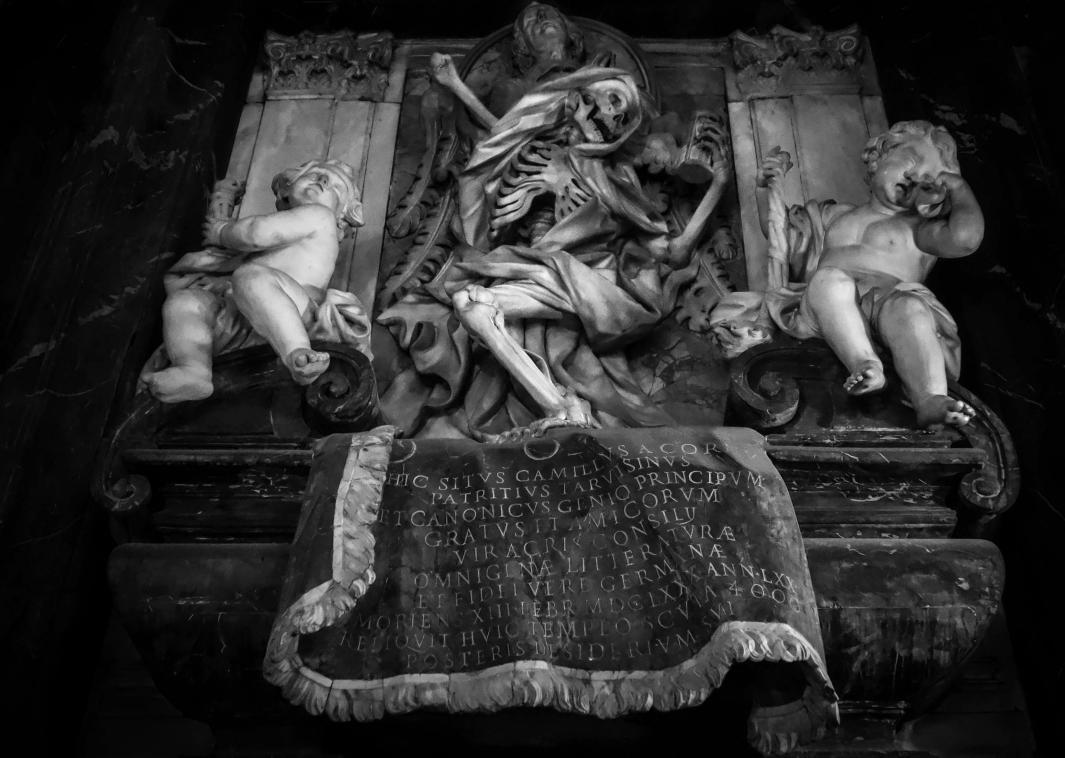
Photo: Elizabeth Harper
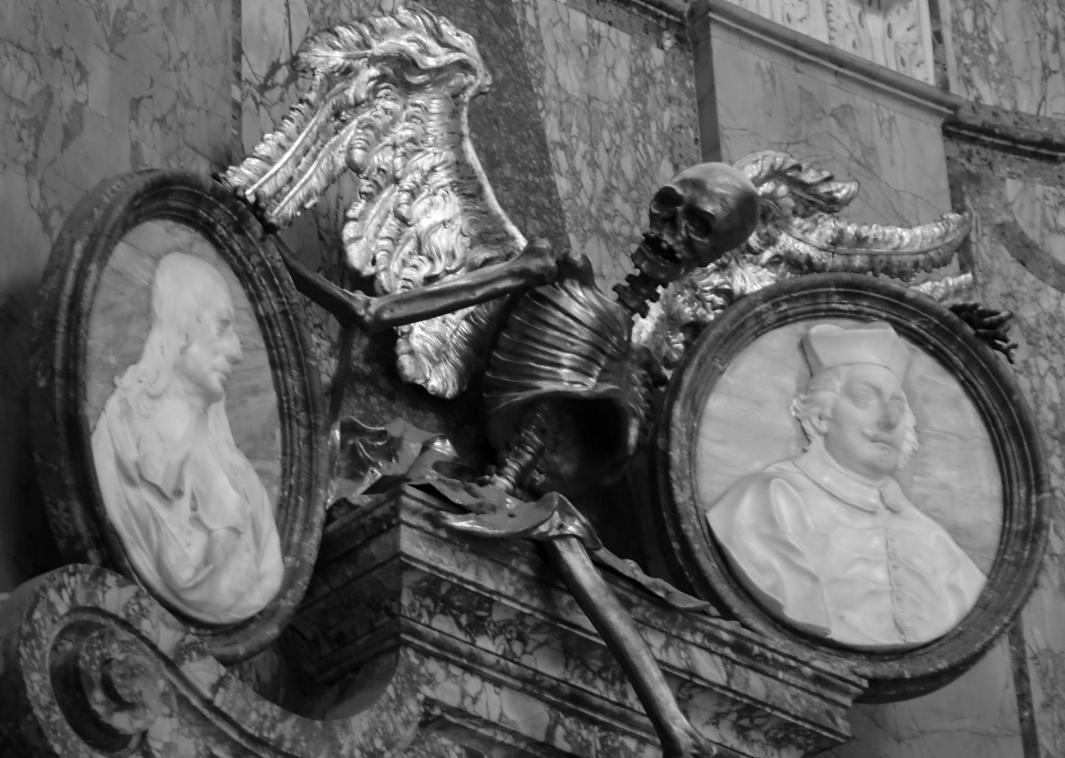
Photo: Elizabeth Harper
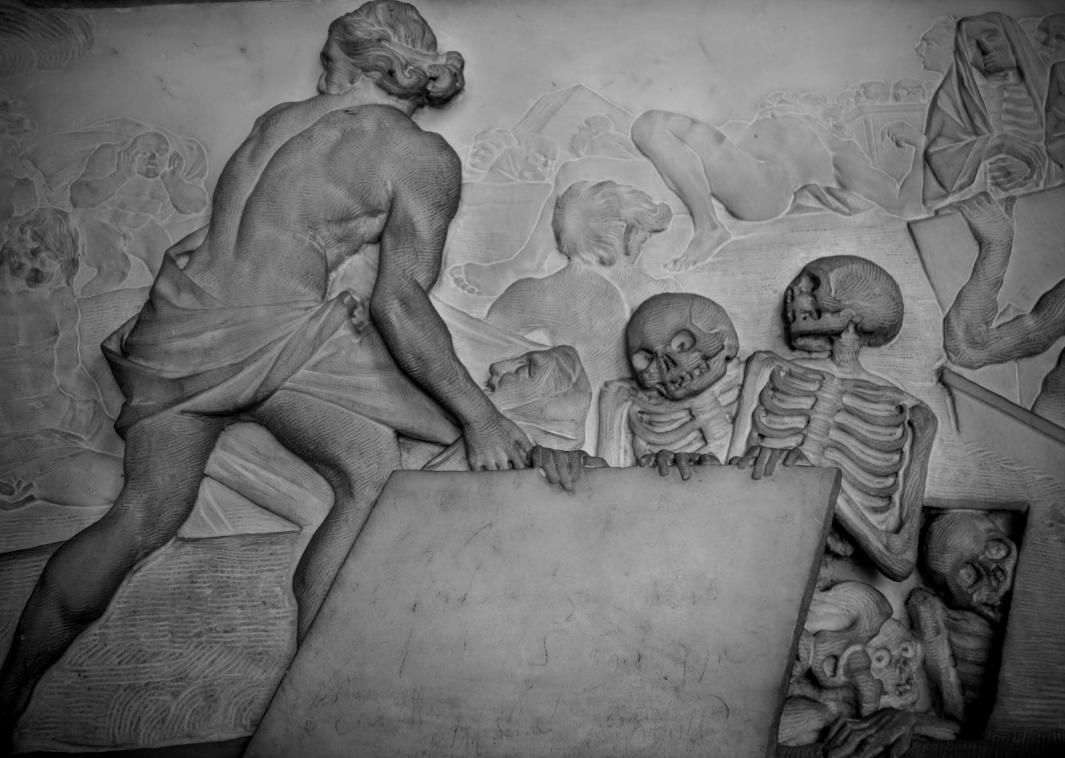
Photo: Elizabeth Harper
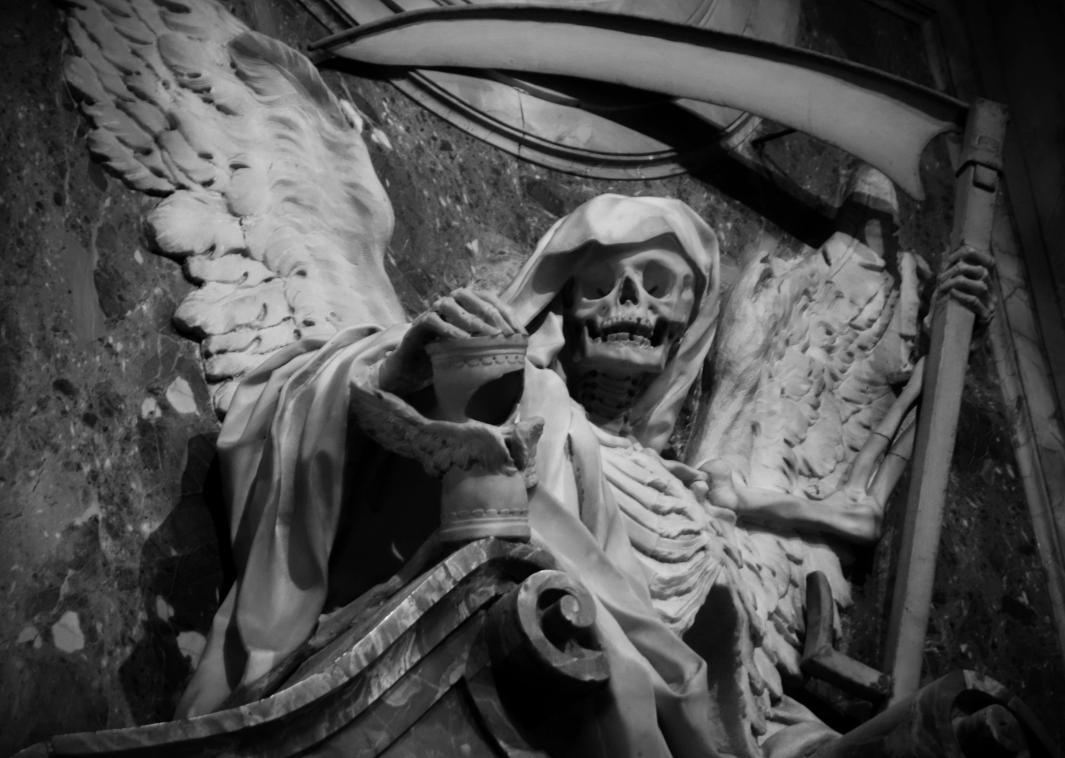
Photo: Elizabeth Harper
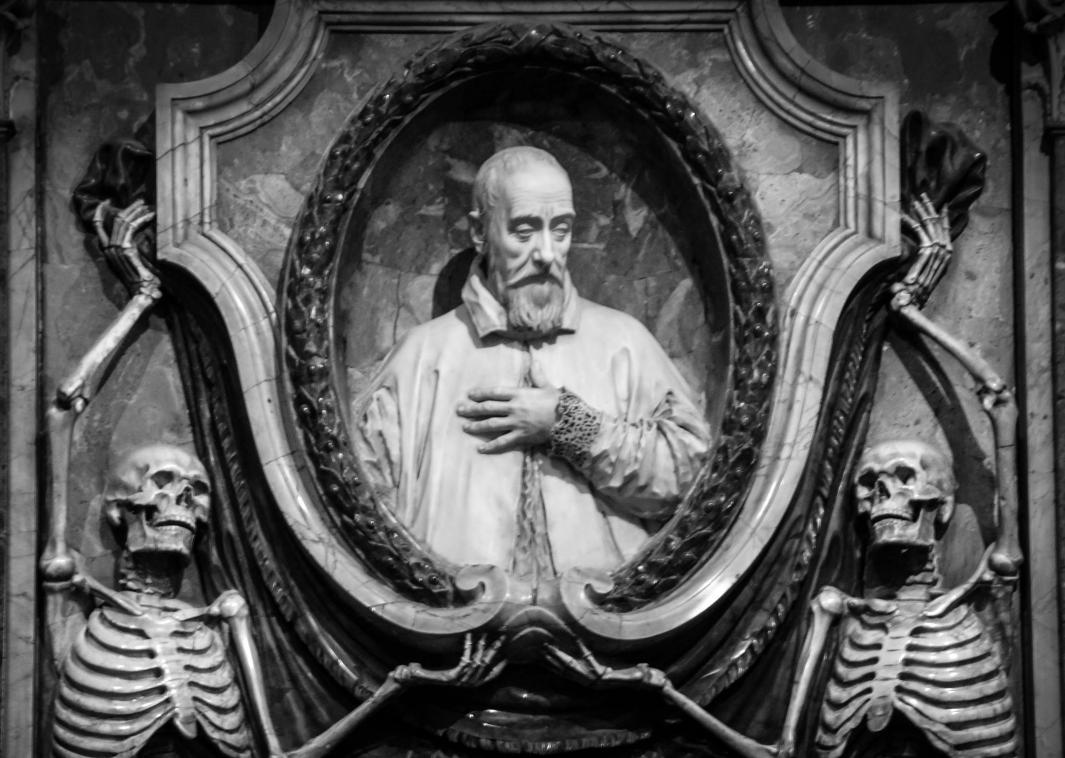
Photo: Elizabeth Harper

Photo: Elizabeth Harper

Photo: Elizabeth Harper
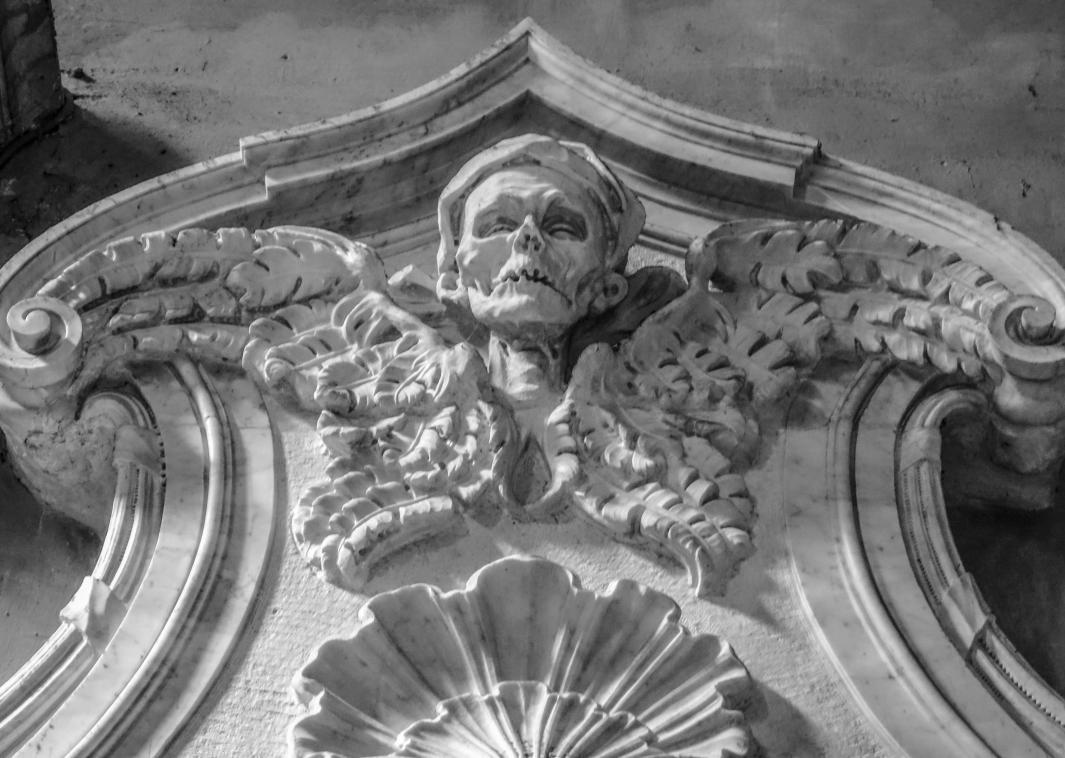
Photo: Elizabeth Harper

Photo: Elizabeth Harper
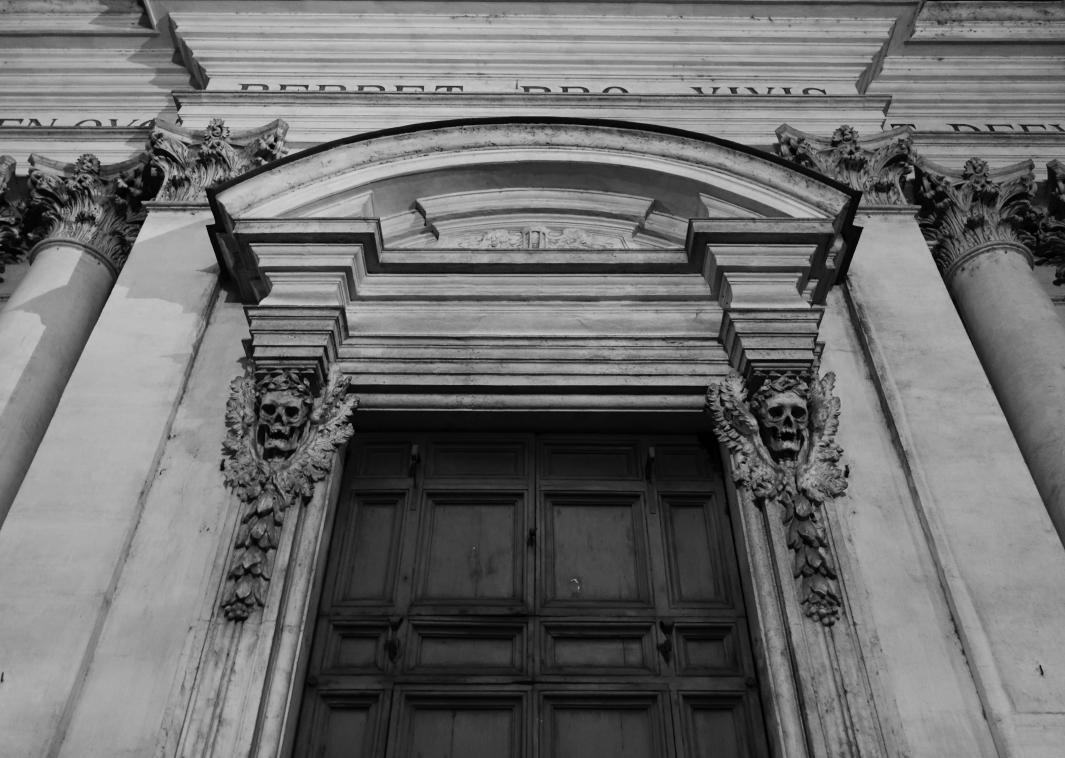
Photo: Elizabeth Harper
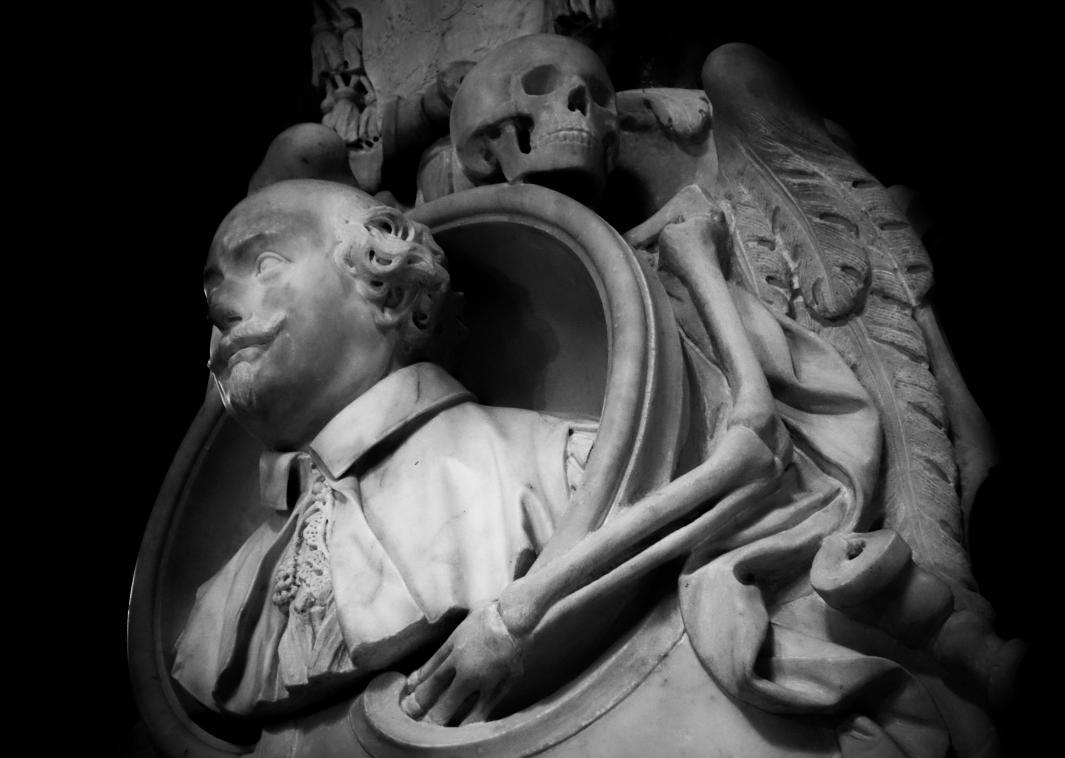
Photo: Elizabeth Harper
